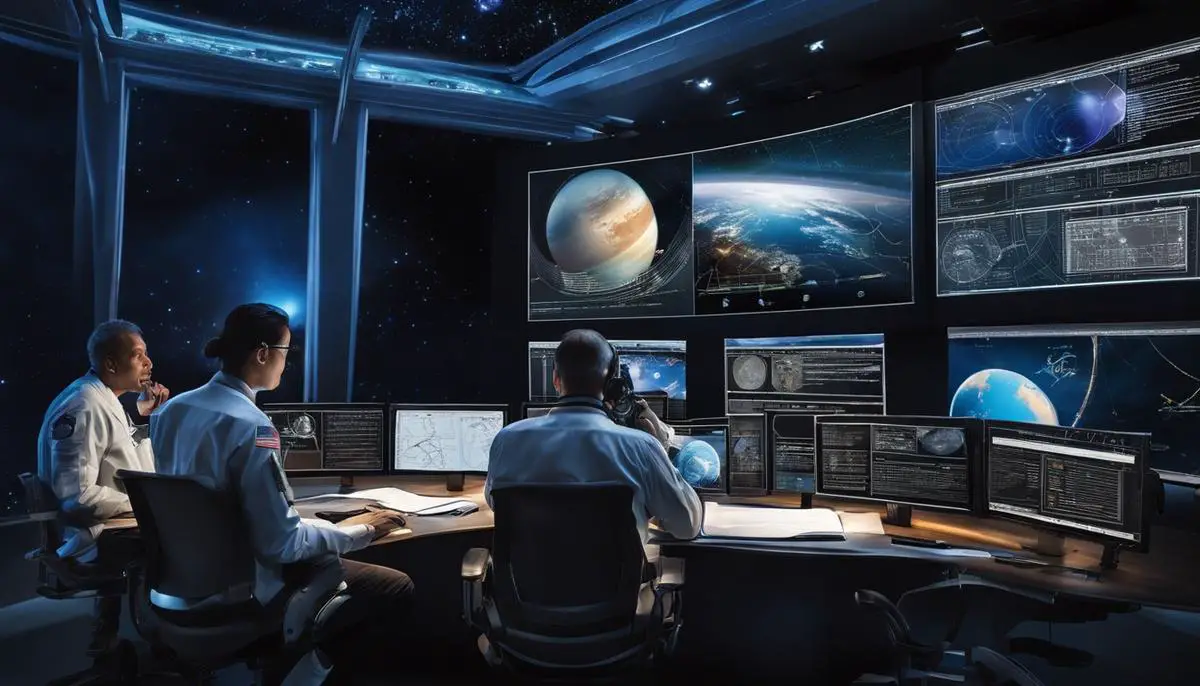The exploration of celestial bodies holds infinite possibilities that can help humanity better understand their own existence and unravel mysteries beyond our planet. One such monumental initiative, the Artemis Program headed by NASA, is on its way to pave a new trail in space exploration, aiming to fly humans back to the Moon and eventually, to Mars. This essay examines various aspects of this groundbreaking program, focusing on the role of the astronauts involved. Moreover, it unravels the specifics of individual Artemis missions while also looking at the potential impacts on lunar science and future space exploration.
Contents
Understanding the Artemis Program
Headline: NASA’s Artemis Program: An Ambitious Leap Towards Deep Space Exploration
In the expansive realm of space exploration, NASA’s Artemis program emerges as a beacon of innovation and endeavour. The ultimate goal of this program, announced in 2017, is to return humans to the moon, specifically the lunar south pole, by 2024. This marks the first time humans will set foot on lunar terrain since Apollo 17 in 1972. However, the Artemis program encompasses ambitions far greater than the mere repetition of a historical feat. It represents a significant leap in humankind’s knowledge, exploration, and eventual settlement of outer space.
A landmark contrast between the Artemis missions and their iconic Apollo predecessors is the intention to establish a sustainable human presence on the lunar surface. Unlike the brief, visually spectacular Apollo moon landings, Artemis aims to enable future missions to Mars and beyond. By returning to the moon in government-led programs, NASA is leading the way towards a new era of cooperation and competition in globally-managed space resources.
The significance of the Artemis program is twofold. First, it opens a treasure trove of scientific opportunities. The moon, being Earth’s closest neighbor in the vast cosmos, houses four billion years of solar system history preserved in its desolate landscape. Lunar dust and rocks offer invaluable clues about our solar system’s origins and how it evolved over time. Deciphering these clues enables scientists to understand more about Earth’s formation and development.
Secondly, Artemis serves as a springboard to our next space destination: Mars. Intent on sending humans to the red planet in the 2030s, NASA is using the moon as a test ground for technologies, operational procedures, and risk reduction strategies before embarking on lengthier and more demanding Mars voyages. Advancements in communications, life support, power systems, and other essentials achieved during lunar missions will be essential for the upcoming Mars explorations.
One important aspect of Artemis is the establishment of Gateway, a small spaceship orbiting around the moon, serving as a home base for human and robotic missions to the lunar surface. In the future, the Gateway could also serve as a critical infrastructure component for the expansion of human activities in space, providing valuable information on deep space operations.
Another distinctive feature of Artemis is the commitment to sending the first woman and the first person of color to the moon, marking a new era in lunar exploration wherein “all of humanity” truly means “all.”
The Artemis program underscores the innate human desire for exploration, unearthing invaluable knowledge while accelerating the development of technology. In order to harness the moon’s potential for scientific discovery and prepare for future Martian missions, Artemis propels us one step closer to our aspirations in space exploration. This anticipated return to the moon captures the essence of our collective ambition and dedication towards understanding the mysteries of our universe.
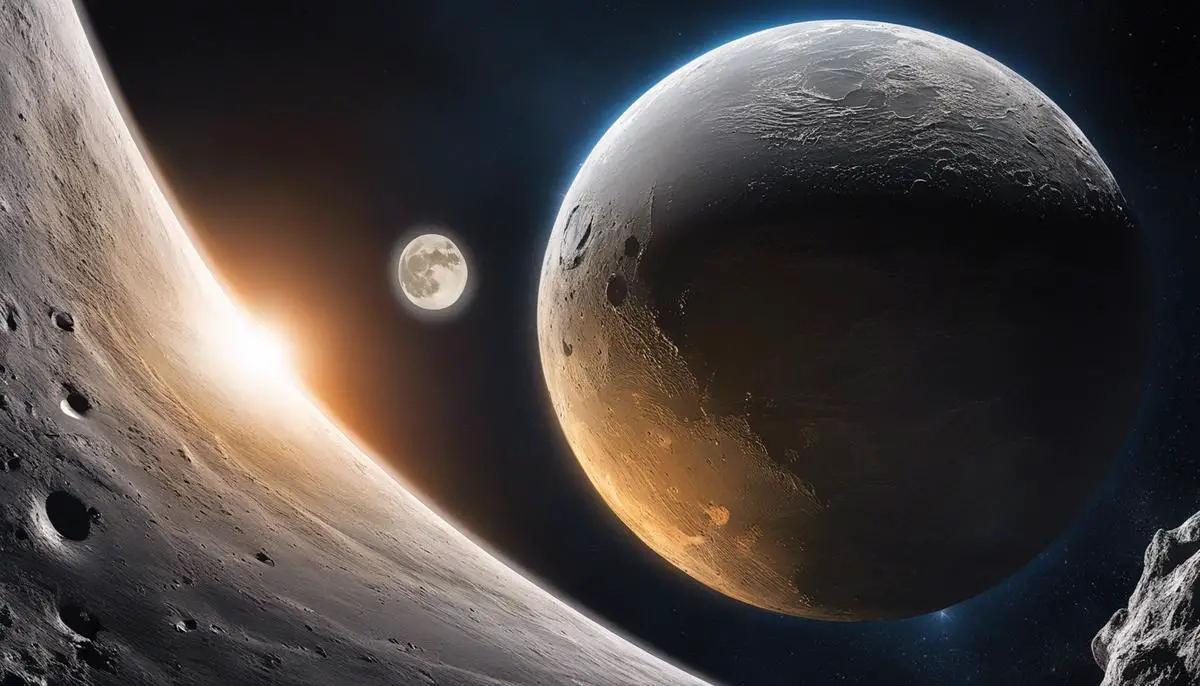
The Artemis Astronauts: An Overview
Under the Artemis program, the National Aeronautics and Space Administration (NASA) has embarked on an endeavor unparalleled in modern times. The pencil thick line-up of astronauts and their extraordinary qualifications give the sentiment that Artemis is not just another moon mission, but a historic event in human space exploration.
An entity in itself, the Artemis team orbits a diverse array of seasoned astronauts, freshly minted graduates and an assortment of backgrounds and careers that paint an ecosystem of scientific exploration ranging from biomedical science to naval aviation. The Artemis team’s uniqueness resides not only in its impressive richness of knowledge and expertise, but also in its multifariousness.
Indeed, NASA has boldly pledged that one of the next two moonwalkers will be a woman. This commitment delivers on inclusivity and expands gender frontier. It represents an epoch-making shift for an organization that sent its first female astronaut into space only 37 years ago.
The astronauts of Artemis pack a powerful punch of qualifications. The team members range from marine biologists to medical doctors, from engineers to Navy SEALs. Each cog of this brilliant collection of minds has accumulated hours of experience in their respective fields amassing ingenuity and innovation.
Having intense immersion in space simulations and intricate zero-gravity training courses, each of these individuals understands the magnitude of tasks they will have to undertake. Their unwavering commitment to acquiring a trove of spacewalking prowess affirms the dexterity housed within the Artemis team.
The multi-continental make-up of the team further sets the Artemis team apart. Having the representation from the international community forms a rich tapestry where stories from different cultures and traditions intermingle, creating a melting pot conducive to broad perspectives and innovative strategies.
In essence, these astronauts epitomize the multidisciplinary and international collaboration fundamental to a project aiming to build a lunar base and maintaining human presence on moon. They mirror the boundless endeavor of mankind’s unquenchable thirst for space exploration. Their potential contribution will enlighten our understanding of celestial bodies, shaping the trajectory of future interplanetary adventures.

Mission Specifics: Artemis I, II & III
In line with the pervasive ethos of the Artemis program is the sequential execution of its three core missions: Artemis I, Artemis II, and Artemis III. These missions have evolved to encapsulate NASA’s broader endavour of lunar exploration, each with distinct objectives that contribute to the overarching narrative.
Beginning with Artemis I, the palpable thrill of exploration could not be more evident. The mission paves way for a renewed era of lunar investigation with its uncrewed lunar orbit. Scheduled tentatively for 2021, this initial mission is designated primarily to test the Orion spacecraft and the colossal Space Launch System (SLS) rocket. Apollo-era methods will be unquestionably surpassed with technology and knowledge garnered over the past five decades. For instance, the Orion will venture 280,000 miles from Earth and orbit the moon, which is significantly farther than any ship for humans has ever travelled. Such a length of journey is indicative of a practice run for future crewed trips, a milestone of truly profound magnitude in lunar expeditions.
Artemis II pursues to deepen our connection with the cosmos. A subsequent mission primed for 2023, will proffer a progression from Artemis I, incorporating its first crewed test flight. This mission engenders the touch of human spirit as it propels astronauts around the moon employing Orion spacecraft but without lunar landing. The mission intends to opportunity to identify any technical issues that can be rectified before a lunar touchdown, hence, solidifying safety for future lunar surface explorations.
The pinnacle of these missions rests with Artemis III, set optimistically for 2024, a year that promises to etch the presence of humanity once again on the lunar surface. The mission plans on reviving the lost tale of lunar walks, wherein astronauts will descend on the lunar South Pole, a region never ventured by humans before. Utilizing the knowledge obtained through its precursor missions and leveraging the affluence of technology development since Apollo, Artemis III reinvigorates NASA’s quest to advance our understanding of the moon and to hone technologies necessary for future planetary missions.
Each of these Artemis missions furthers our scientific understanding of the moon, while at the same time setting forth precedents that will shape our approach to future human deep-space exploration. The astronauts’ suit systems will be updated, lunar surface operations will be trialed, and systems necessary for future Mars missions will be tested. Each component of these missions reinforces the broader objective of expanding scientific insight and fortifying technological strides to invigorate the cause of mankind’s continued space exploration.
Although the Artemis program may be a vessel for humankind’s rediscovery of the lunar landscape, it is also a crucible for new technologies, research strategies, and a stepping stone to further celestial territories. These missions are more than just a return to the moon; they represent a vanguard for space exploration. They are the kernel of a dream, a dream that extends the arc of human potential to the furthest reaches of imagination.
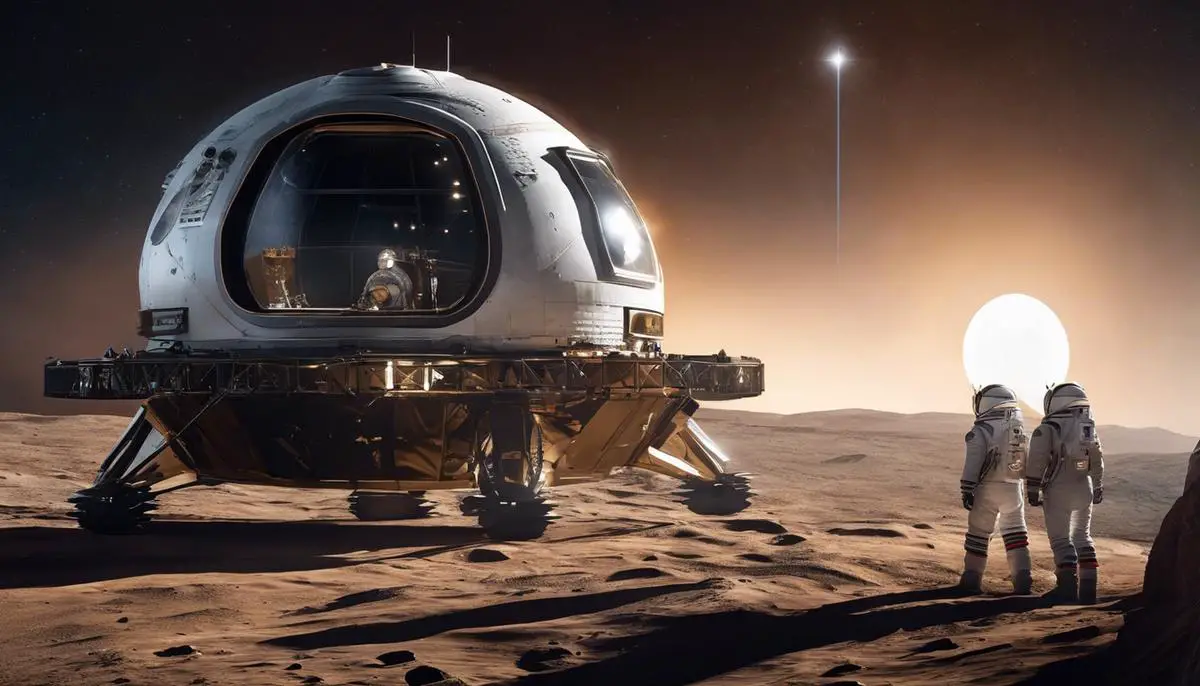
Impact of Artemis Missions on Lunar Science
From these aforementioned undertakings, it becomes clear that the Artemis missions will contribute substantially not only to lunar science and exploration but also to a broader comprehension of our planetary family. The quest for conceiving the uninhabitable into a livable body of interstellar land deepens our overall knowledge, paving the way for exploratory breakthroughs.
At the core of Artemis’s missions is the determination to examine lunar geology more comprehensively. By studying the moon’s South Pole, it opens vistas for understanding a region known for its permanently shadowed areas, locations where sunlight never reaches. These areas are thought to encapsulate enormous water ice reserves, critical for future lunar habitation and interplanetary space travel. Hence, Artemis missions behold the promise of surveying these unexplored regions and providing valuable details regarding lunar water and other volatiles, an absolute novelty in space exploration.
The exploration of the lunar South Pole during these missions also offers an unprecedented chance to delve into the moon’s history. Our natural satellite has been a silent observer of celestial events since the solar system’s genesis. By investigating the lunar surfaces and obtaining samples, crucial information regarding the moon’s crust, the prevalence and nature of lunar seismic activity, and the impact of micrometeorite bombardment will be ascertained. These insightful explorations not only refine the understanding of the moon but also provide a clearer perspective on the historical events that have shaped our entire solar system.
Artemis missions are going much beyond lunar research, they umbilically connect the sustainable human settlement on extraterrestrial domains. To this end, experiments will be conducted on various advanced technologies that would allow humans to lead an independent and sustainable life on the moon. They would test the feasibility of in-situ resource utilization (ISRU), a process that employs locally sourced materials for practical purposes such as producing breathable air, drinkable water, and rocket propellants. If successfully manifested, ISRU technologies could markedly reduce the massive costs and logistical complexities related to ferrying items to and from space.
One of the most remarkable facets of the Artemis missions is their ability to foster international cooperation in space exploration. Space agencies from Canada, Japan, and several European countries are actively participating, embodying the universal spirit of scientific exploration key to human survival in outer space. This addition of diverse instruments and experiments by international partners not only amplifies the scientific yield of the Artemis missions but it also builds a shared foundation for future cooperative endeavors in space.
By pushing the frontiers of human knowledge of and capabilities in space, Artemis missions are poised to make historical strides in lunar science and exploration. Their attention to scientific scrutiny, advanced technologies, and international cooperation respectively is not just a chance at marvel at human pursuits but a vital necessity for humanity’s evolution and survival in the cosmos. Be it technological, scientific, or geopolitical, the Artemis missions stand as a multifaceted initiative, marking a new era in lunar exploration.
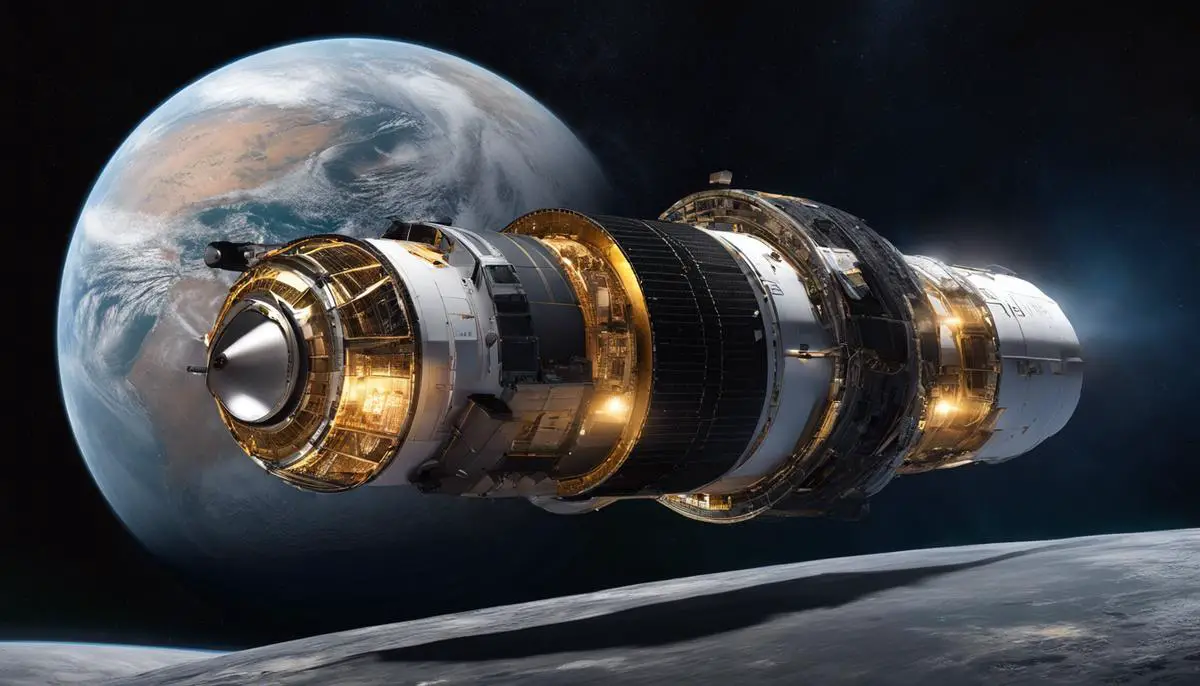
From Artemis to Mars: The Future Implications
Moving beyond the Moon: Artemis Missions and Mars Exploration
The Artemis missions bring to the table numerous leaps towards the exciting reality of human exploration beyond the moon. As seen in the Apollo missions, lunar landings represent an iconic milestone in human spaceflight; however, with Artemis, NASA’s objective is not merely to revisit past triumphs, but to forge a path forward towards Mars and the deep unknowns of space.
One key facet of Artemis missions, untapped by the Apollo landings, is the deliberate focus on the lunar South Pole. The South Pole’s unique environmental conditions, including its craters’ permanently shadowed regions, offer a chance to study ‘water ice’. This mysterious water ice is a vital resource that can be converted into fuel for space exploration, thereby drastically reducing the cost and logistic burdens of long-haul missions to deep space.
Part of this wider scheme is the testing of advanced in-situ resource utilization (ISRU) technologies on the moon, which stands at the forefront of long-duration exploration efforts. ISRU allows astronauts to use lunar resources for life support or rocket fuel. If successful, this technology could transform the viability of future Mars missions by overcoming massive cost and supply-chain barriers.
Beyond the confines of material and technological progression, Artemis missions also signify leaps ahead in international cooperation. Bonds formed with space agencies in Canada, Japan, and Europe, among others, will not only share resources and expertise, but also foster a greater sense of shared momentum towards ambitious space exploration. This global collaboration is poised to break the bounds of numerous path-breaking initiatives, setting the stage for an expansively shared future in space.
While these strategic maneuvers towards Mars undeniably fuel the ambition behind Artemis missions, a broader scientific context is at play. By harnessing today’s cutting-edge technology, these missions aim to expand our understanding of the universe. Comprehending the moon’s seismic activity, impact events, and surface geometry offer insights into the history and evolution of our solar system – a scientific opportunity we cannot turn a blind eye to.
As we stand at the precipice of this new wave of lunar exploration, we’re not merely prying into cold, distant lunar craters or surveying bare, stark landscapes. Every footprint imprinted onto the lunar surface propels us further towards a future – one where humans step off Earth, move beyond the confines of the moon and Mars, and dive into the unfathomable depths of the universe.
Cradling advancements in technology, fostering global unity, and broadening scientific understanding, the Artemis missions do more than refashion the narrative of lunar exploration. Unquestionably, they have the power to deeply alter our stride into the cosmic tomorrow and beyond.
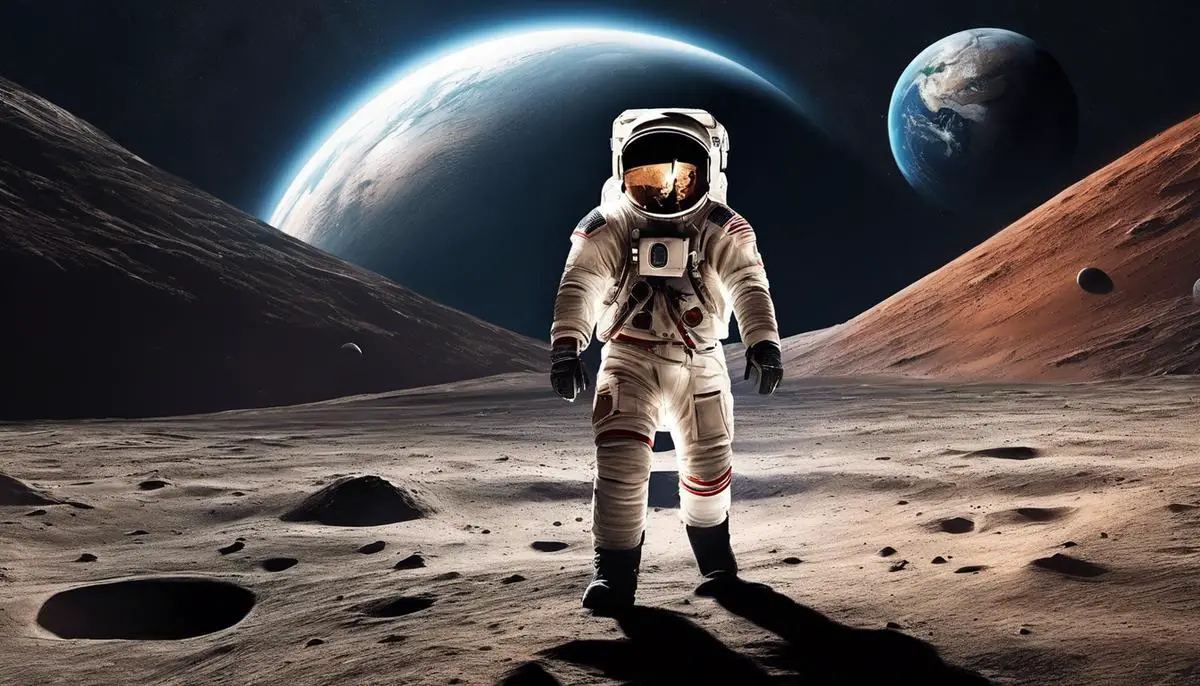
Moving forward, the Artemis missions represent more than just humanity’s return to the Moon. These groundbreaking endeavors embody the spirit of exploration, the thirst for knowledge, and the steadfast aspiration to broaden human presence in the cosmos. As we stand on the precipice of a new era of lunar exploration, the lessons gleaned from the Artemis missions will undoubtedly shape future endeavors to Mars and beyond. Undoubtedly, the program is set to enrich our understanding of the universe, pushing the boundaries of human capabilities and innovations, enhancing our potential to become a multi-planetary species.
